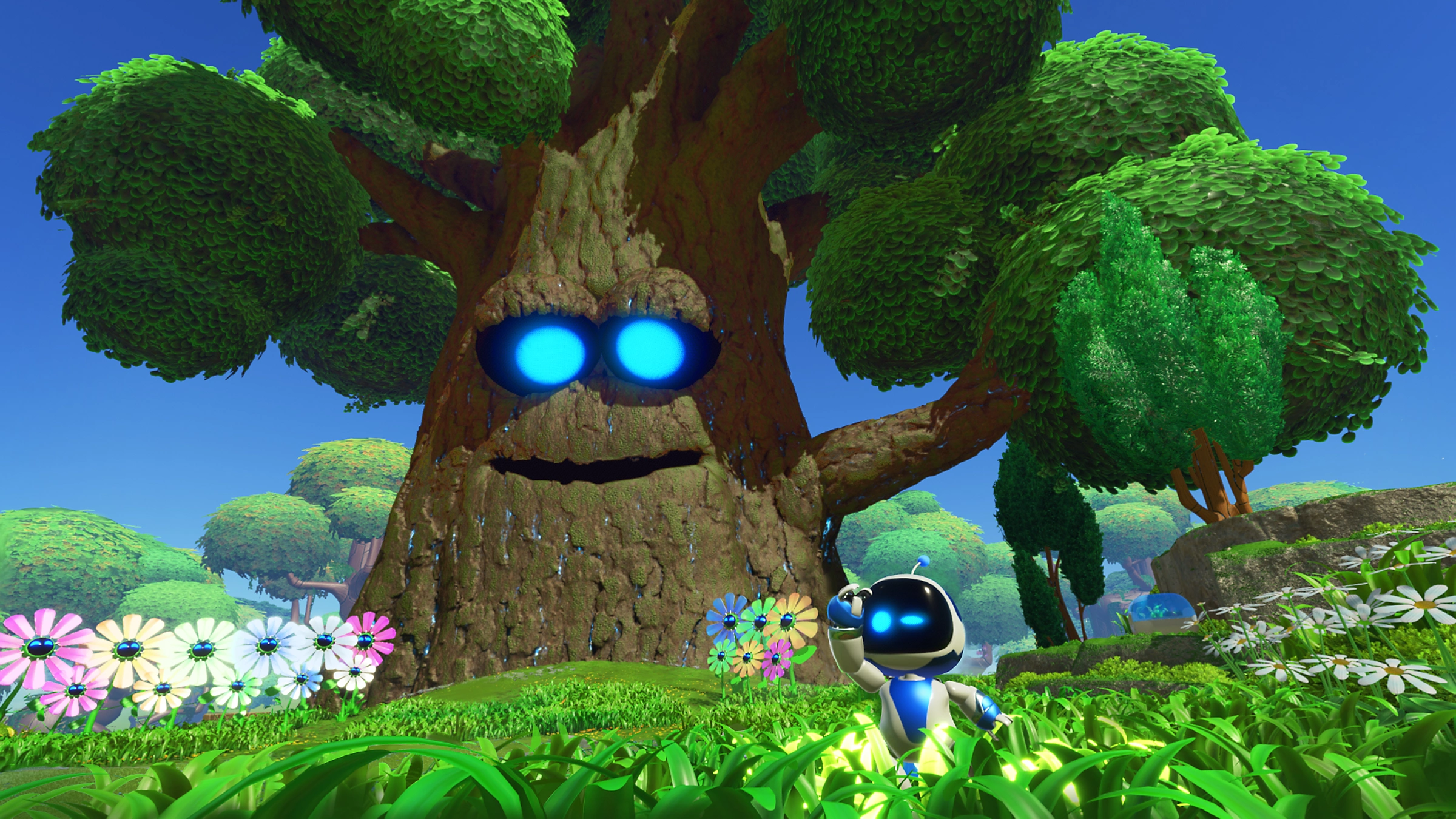Nearly four years later, one of the PlayStation 5’s very best games remains the one which shipped for free inside of your console.
Developed by Sony’s Japan-based Team Asobi, Astro’s Playroom is both an impressive showcase of the PS5’s DualSense controller, and a captivatingly imaginative platformer, celebrating three decades of PlayStation, with references to classic games from as far back as the 90s.
With nearly 60 million PS5 owners having access to the game – and presumably a significant number of those likely to have at least tried it – it’s no surprise that the cute robot has become something of a mascot for PlayStation, with the recent Champions League Final featuring Astro heavily in and around the stadium.
But despite having created possibly one of PlayStation’s most popular games ever, creative director Nicolas Doucet isn’t letting the hype get to his head.
“I think it’s great, but the mascot thing is for people to decide – we never go out and say that,” he told VGC in a recent interview at Summer Game Fest. “It needs to be something that grows with the players with an emotional connection. But of course, we are very, very proud. It’s great that Astro is seen as a figure that’s respected and friendly.
“You know, with the game, we’ve been working hard on this duality: we wanted to create a gamers’ game which is very neat and precise, but on the other end is also accessible, friendly and cute, and can be put in front of anybody and delight them.
“I think it’s also this duality that allowed us to get to the places you’re talking about, because the Champions League final is a family event where you’re going to have kids walking in, so you need to have a character that’s funny and endearing.”
For Team Asobi, its pride is multifaceted. It’s glad to have created a worthy technical showpiece for the PlayStation 5, a tribute to the platform’s heritage, and also a worthy title within a genre dominated by giants. During our conversation, Doucet also makes frequent mention of the responsibility and “honour” of being potentially many children’s first foray into video games.
However, when Asobi looked at what it was going to do next, the breakout popularity of Playroom meant it had important choices to make about the direction of the sequel, and how faithfully it should keep to the foundations laid out by the PS5 pack-in, such as its focus on the ‘multiverse’ of PlayStation franchises.
“When we started this game, we had discussions about whether we should or shouldn’t lean on PlayStation,” Doucet explained. “There were various opinions, with some questioning whether we should fly with our own wings and not be held back, but actually we decided it was the case that we were already doing that, but then also adding this layer of PlayStation because we can – and why not?”
He added: “That was our mindset. If, in the future, we had an adventure that was all Astro and PlayStation wasn’t part of it, I don’t think that would be a problem. As long as the core elements and qualities of the game are great, then I think anything is possible.
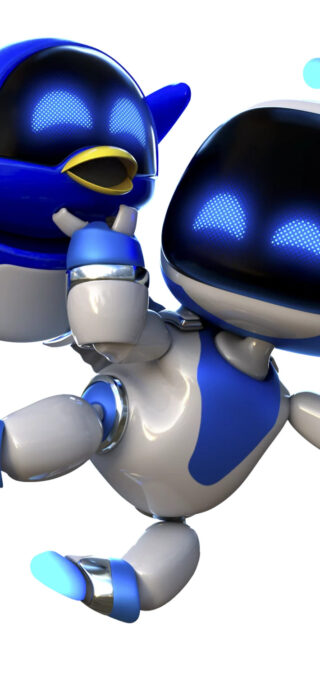
“It’s a very flexible IP and that’s one of the things that I love about it. We approached with a light heart and didn’t write a backstory: we’re not precious about details too much, other than the design of the character, which needs to be respected. The rest is really open, and thanks to that, we can feel quite relaxed about where it’s going next.”
RESCUE MISSION
Called simply, ‘Astro Bot’, Asobi’s next, full-priced platformer is more than four times bigger than Playroom, according to PlayStation. The new game will consist of over 80 levels spread across six ‘galaxies’, with players tasked with rescuing 300 robots left stranded across them – including 150 ‘cameo’ bots based on popular (and not-so-popular) PlayStation games.
Though its reveal trailer offered huge promise, questions remained about how capable Asobi would be at turning a tight and inventive 4-5 hour experience into something that could surprise and delight players in the same way over a far longer adventure – questions that were absolutely obliterated in our minds after spending time playing its opening sections.
Just like its previous games, Astro Bot’s levels – now selected from an overworld map full of planets – are absolutely bursting with imagination and personality, with mechanics introduced and tossed aside in quick succession.
In its opening 30 minutes, we discover a squid-like backpack which inflates Astro like a balloon, allowing us to float through the environment, a magnet which hoovers up hundreds of tiny metal blocks scattered around the world into a giant projectile, a bulldog jetpack which allows us to dash and smash through obstacles, and a paint gun which can be used to reveal invisible platforms.
“It’s a very flexible IP and that’s one of the things that I love about it. We approached with a light heart and didn’t write a backstory: we’re not precious about details too much”
That’s without mentioning the plethora of new obstacles and enemies, like little sumo bots who will try to push you off the stage, or footballs which can be kicked through basketball hoops for fun rewards.
Eventually, Astro picks up a pair of mechanical arms with boxing gloves, and the entire experience turns into Nintendo’s ARMS, with players using each controller trigger to uppercut their way through environmental puzzles, culminating in a brilliant and spectacular punch-up with a gigantic octopus.
It’s a display of platforming creativity rarely seen outside of Nintendo’s flagship Super Mario games. According to Astro’s creative director, behind the scenes, the secret has been maintaining a tight team with a focus on prototyping often – a culture that it maintained even after the closure of PlayStation’s wider Japan Studio.
“I think we were always in a little bit of a bubble with our own ways of working anyway [before Japan Studio’s closure]. The team has grown a little bit bigger, but not too big. Not much has changed, honestly,” he said.
“We continue focusing on having these two-week cycles so that prototypes can be reviewed quickly, and we can quickfire lots of ideas and see them on the screen. Because a game like this focuses on a lot of variety. So that way of working hasn’t really changed, it’s just on a bigger scale.”
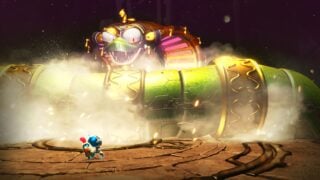
He added: “I think there is a limit [in team size]. There is a point at which you become too big to be able to do that anymore. So we need to be cautious about that.
“I think for us, it’s an absolute must [to maintain the culture]. Whatever you’re working on, you need to be able to first know where it’s going into the full picture, and to do that we need to play the game together.
“For example, if you work on vegetation, like trees and shrubs, for us that’s still an integral part of the game: if there’s a bush, and you punch the push, a pirate might come out with treasure, and leaves come off and there’s haptic feedback.
“So even though there isn’t a goal connected to these things, they’re an integral part of the game. So every member of the team really has a hand on the gameplay, which is not necessarily the case for every game. As a result, it’s important to keep this tight team where we review the game often and don’t lose track of what we’re doing.”
DUALSENSE 2.0
Outside of its cavalcade of power-ups and boss encounters, thanks to its smart use of the DualSense controller and its various haptic sensors, simply interacting with the world in Astro Bot can be an enjoyable experience.
The game’s opening levels are littered with seemingly purposeless playgrounds, there simply for players to mess around with physics objects and enjoy the sensation of swinging on a rope or walking through the tall grass.
2020’s Playroom is still one of the absolute best showcases for DualSense, which Doucet attributes to the team’s proximity to the Tokyo-based team who created the controller (“We had the DualSense since it was this gigantic prototype, with cables everywhere… we were the first ones to be able to touch it and have these discussions”).
Q&A: Nicolas Doucet
How do PlayStation characters work?
There are 150 of them to rescue. You collect them, and there’s a place, the crash site, where they will assemble. I can say that as you complete your set, they will have some funny reactions that are related to some of the game.
Are there any PlayStation artefacts?
It’s just characters. We’ve already done the hardware thing. We did consider it, but decided not to.
Do other companies ask you to use their characters?
Yes they do! But largely, it’s us approaching them. So far we’ve been able to put everything we wanted to into the game.
How many ideas did you have left over from the first game?
There were a few prototypes that we couldn’t fit into Playroom, but generally, we went back to the drawing board. There were a few ideas that we shelved that didn’t make it to this game either.
At launch, Astro’s Playroom was DualSense’s killer app, sending players through a series of sensory playgrounds comprised of pitter-patter raindrops, windy meadows and sun-kissed beaches that will leave most players wondering how on Earth a piece of plastic managed to create the illusion of sand.
For the new game, Asobi assembled a small team it dubbed ‘DualSense 2.0’, dedicated to extracting even more from the PS5 controller than the launch title was able to.
“We did put a lot of our ideas into the first game, but there was also a lot that we didn’t use,” he explained. “The story of the game is that PS5 is the mothership, and something happens which means the ship needs to be repaired.
“As part of the repair mechanics there will be some kind of DualSense interaction that we’ve had in mind for ages, but we didn’t find a good way to use – we didn’t have the right setup for it. So we had that in our bags for this game.”
In true Sony triple-A fashion, Astro can also run his hand against the wall in some areas, allowing players to ‘feel’ the difference in textures, from smooth to rough. Doucet says this is only used a few times, but the development team believes it’s these kind of moments that make the DualSense implementation memorable.
We were initially sceptical about whether the same level of fidelity seen in Playroom could be applied to a larger experience, especially since the DualSense’s battery depletes faster than the bar tab at a British press event. Doucet says Asobi has intentionally held back from constantly blasting PS5’s haptics during Astro Bot, but not for the reason you might think.

“When we made the controller, that question [of battery life] came up. But no, it’s more a case of actually, if you overdo it with the haptic expression, you can’t feel the contrast anymore,” he explained. “It feels great when you have a little bit of grass, then metal, and that haptics contrast really makes the experience. But if you have too much going on, like grass all the time, you stop feeling it.”
He added: “With the haptic feedback, it’s exactly the same as visuals: you can add loads of detail, but then if you add too much, you don’t see your path anymore. From far away, you want to know all the places you can go, because it’s painted that way and there’s a visual design to it.
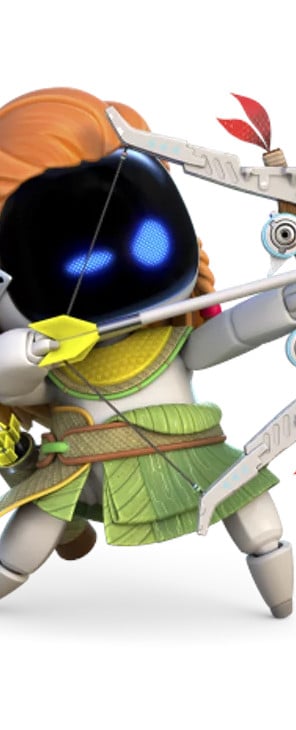
“But the moment you add loads of details, you’ve not really added to it. It’s just noise. So it’s about taking a step back and deciding to have an elegant simplicity.”
AGRO BOT
At the start of our interview, Doucet talked about a “duality” to Astro Bot’s design – that he wanted its gameplay to appeal to both hardcore players – with its tight controls and neat platforming – while also carrying strong appeal and accessibility to younger or less experienced players.
This was hinted at in Playroom’s competitive speed-running scene, where even months after release, top players shaved seconds off their records with seemingly impossible platforming feats.
This time around, the challenge for experienced players is clearly ramped up and more connected to the core experience than in the previous game. At the end of our demo, we were instructed to crash into a PlayStation-symbol-shaped comet travelling across the map screen, which initiated one of the game’s challenging side levels.
This particular level featured platforms made entirely of glass, which would crack underneath Astro’s feat, especially when using the laser-shooting hover mechanic. Eventually, spinning projectiles made progressing through the course extra tough, as expert timing was required to avoid them and not land on a gaping hole left on the glass floor.
“With the haptic feedback, it’s exactly the same as visuals: you can add loads of detail, but then if you add too much, you don’t see your path anymore. From far away, you want to know all the places you can go”
A second challenging level featured a time-stopping mechanic, allowing players to briefly slow fast-spinning platforms and moving enemies, barely long enough to reach safety.
According to Doucet, the team’s decision to move to a level-based structure instead of an alternative (it briefly considered an open world) has enabled it to create this kind of optional content alongside the golden path.
“We have this philosophy that we didn’t want to add difficulty on an options screen,” he said. “You could make the gaps bigger or smaller, or add more health, but fundamentally, it’s geometry-based gameplay, and the difficulty has to come from the content that is on the main path, versus the content that is optional.
“For example, in the first galaxy, if it’s a first experience for a young player, maybe they can make it to the boss, maybe they can beat the boss, and that would be OK. But especially that first level is designed to be a toy box, with some soccer balls and flamingos to play with, so a very young kid can play that and be fine.
“Each galaxy gets progressively harder, but the stuff really meant for hardcore gamers are the optional challenges.”
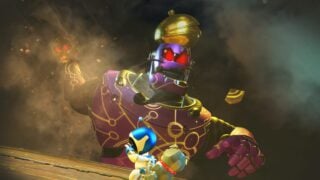
The two high-difficulty levels we played reminded us of the late-game challenges in many 3D Super Mario games, such as Galaxy or 3D World. The rewards for completing such stages also seem to be worth it, as Doucet says the most nostalgic cameo characters will likely be found there.
Similar to Playroom’s Labo area, which filled up with various hardware artefacts as you found them, Astro Bot’s cameo characters will gather at the crash site seen in the reveal trailer, where players can interact with them.
“We’ve tried to match them so that the characters you find in the very challenging levels are relevant to that audience,” he said. “For example, a really obscure character is better to be found in those challenges, rather than one a kid might be playing. So, for example, Ratchet and Rivet are in the first level because they’re designed for a young audience.”
No longer a tech demo
As wonderfully imaginative as Playroom is as a small experience, it’s also designed as a tech demo for the PlayStation 5, barely disguised within the fact players explore the various elements of the hardware itself such as its SSD and GPU.
For Astro Bot, the game’s development team wants to create a more pure platformer, with all of its bells and whistles layered on top of the core mechanics, rather than forcing players through a series of mini-games. If it’s able to keep this up throughout, it’s certain to be a special title.
“There’s one thing we do less of,” Doucet explains. “Astro’s Playroom was very segmented. Although it was presented as one package, if you really deconstruct it, it’s actually lots of mini-games and tech demos. For example, we’ll do a bit of platforming, some haptics, then you’ll go into the jet and switch to a 2D camera, then switch back to platforming.
Q&A: Nicolas Doucet
How important is working alongside the hardware teams?
A massive help. We had the DualSense since it was this gigantic prototype, with cables everywhere… we were the first ones to be able to touch it and have these discussions. So the engineers who work on the gameplay implementation here understand how the hardware works particularly well.
Are there any features for DualSense Edge?
No, nothing specific. Because we wanted to be as accessible as possible for everybody.
Was PSVR2 ever in consideration for this?
Because of the team and how compact it is, we do one thing at a time and focus carefully on it. So our focus has been taking Astro’s Playroom to the next stage.
“This time around, from the get-go, we wanted to blend everything into the platforming. We don’t want you to feel like you’re going between mini-games. There are a few elements like that left, like the section in the demo where you paint the scenery, for example, but generally speaking, it’s an add-on to the platforming.”
He added: “Like the bulldog booster… that comes on top of the platforming, and then it makes the experience so much richer, because as a platformer you go back to the fundamentals of run, jump, hover, and then on top of that we bring mechanics that need to be complimentary to that.”
For example, the touch pad is one controller feature Astro Bot does not use during core gameplay, as it would get in the way of being able to use the face buttons for core mechanics.
“We’ve had to rethink what is a tech demo versus a game,” said Doucet. “Before it was largely a tech demo and on the side we were pushing the platforming. Astro Bot is a cool technology showcase, but it’s no longer driving our design decisions – it’s the other way around.”
Before we left, we wanted to ask the Team Asobi boss about PlayStation’s heritage. Astro Bot has become the defacto showcase for the platform’s history, referencing franchises and characters that don’t get much air time in full games anymore, thanks partly to increased development costs or shifting trends.
Many of them are by Japan Studio and London Studio, Doucet’s former employers, and the famous PlayStation developers which have recently been closed as part of company restructuring.
So, does the director of Astro Bot feel any responsibility now, as the seeming custodian of so much PlayStation history?
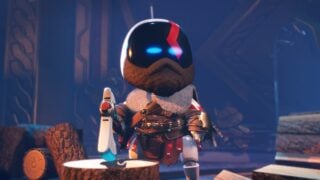
“I can see why it might seem that way, but I don’t see that responsibility like a weight [on my shoulders] or a scary type of thing,” he replied. “It’s more like an opportunity. It’s a chance to put funny eyes on a PS5, turn it into a spaceship, and then everybody applauds. Internally, everybody sees that and wants more – it’s not a case of having to convince people or have these battles.
“As long as we do it with a light heart and don’t take ourselves too seriously, I think everything will be alright. When you try to be too serious about things, that’s when it becomes like you’re walking on eggshells. The way that we treat our own work is how it’s reflected in the game, then emotionally that’s how it’s received by the player.
“I think it’s important to all be in the same mindset. You know, it’s just a funny, colourful game where we end up celebrating 30 years of PlayStation with funny characters doing silly things relating to the game that they come from, and that’s all. I think as long as we keep that mindset, we don’t have a reason to feel pressured.”
Astro Bot releases for PlayStation 5 on September 6.

